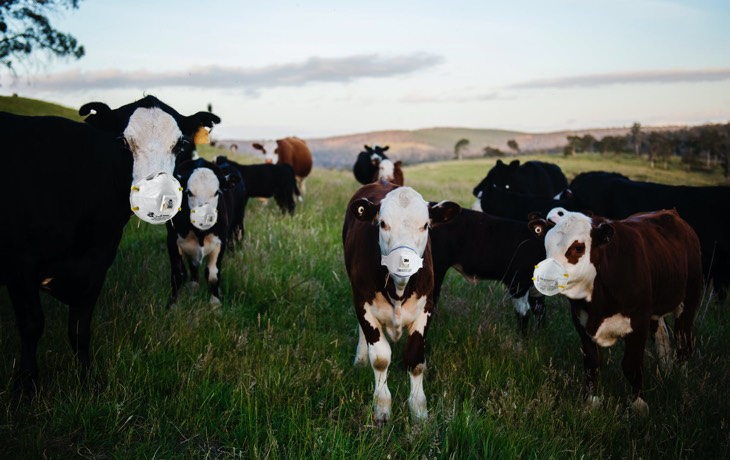As states like Texas and Georgia open up, there’s a popular idea making the rounds about herd immunity, one that’s even been heard on Australian TV from the former state epidemiologist of Sweden. It goes like this:
The latest antibody studies from places like Santa Clara and New York show that COVID-19 is more widespread and mild than we thought. Many of us have already had it and recovered. Now, we’re probably very close to the elusive “herd immunity,” or perhaps already there. Now we don’t have to worry.
Herd immunity happens when enough people in a population have antibodies for a virus. Those antibodies can appear artificially through vaccination or naturally by having survived it. When we reach that point, an outbreak stops growing and begins shrinking (i.e. the disease’s viral coefficient, or R value, is below one).
This argument appeals for obvious reasons! We’d all love to return to frolicking in the nation’s shops and airports and subways. But it also has one serious problem: it isn’t true.
The herd immunity theory relies on over-credulous use of outlier results. It requires completely throwing out the bulk of the evidence we have about COVID-19.
No one should believe we’re close to herd immunity. Not even for an instant.
Wait, what’s a serostudy?
Like many bad ideas, this one begins with something real. In this case, that’s serostudies.
We have two different kinds of tests for COVID-19:
- PCR test detects viral RNA in a patient biosample to determine if they currently have COVID-19.
- Antibody tests detect anti-SARS-CoV-2 antibodies in patients’ blood, to determine if they had COVID-19 in the past and have retained some immunity.
Serostudies rely on the second type of tests, which look for antibodies. These tests can be quantitative (determining how much antibody patients have) or binary (determining if they have antibody at a particular threshold).
Researchers are already using quantitative antibody tests on recovered COVID-19 patients to estimate how much titer they have against a relapse. This is important, because it affects how effective herd immunity will be at stopping COVID-19. It will also help us figure out the effectiveness of convalescent plasma, therapeutic antibodies, and vaccines. Right now, although there is some controversy in the field, it appears that the large majority of recovered patients have significant titers of anti-SARS-CoV-2 antibodies. That means they probably won’t contract COVID-19 again.
How serostudies determine herd immunity
Binary serostudies are being used to estimate the percentage of people who have had COVID-19 in different areas. With that location-based estimate, scientists can determine fatality rates, ascertainment, and herd immunity.
In some cases, serostudies can lead to dramatic results; the 2009 H1N1 pandemic initially seemed like it might have a higher fatality rate than the normal seasonal flu, until serostudies showed that they were actually about the same. As a result, even though H1N1 infected about a billion people, the fatalities were not much higher than the current COVID-19 death toll.
We have more binary antibody tests in the United States than we do PCR tests. Serum antibody tests are even being offered to the public by companies like Quest Diagnostics, which doesn’t require a prescription and charges $119. (The Prepared will have a report on what that test is like from the patient perspective in the next few days.)
Right now, we know more people have had COVID-19 than the numbers show. Serostudies might be able to help us determine how many people have actually had COVID-19 and survived. Then, we can calculate more accurate fatality rates.
Available serostudies in COVID-19
The most recent serostudies give vastly different positive rates. Take this selection, for example:
- 1.4% of a sample of 442 people in Helsinki
- 1% of a sample of 500 people in Scotland
- 1.5% (2.8% after adjustment for sample distribution) in Santa Clara, CA
- About 3% of a sample of over 4,000 people in Holland
- 14% of a sample of about 1000 people in Gangelt, Germany
- About 30% of a sample of 200 homeless people in Chelsea, MA
- 20% of a sample of 1300 people from New York City (and 13% of 3000 samples from the state at large)
More such studies are landing by the day.
Overall, that’s good news. But studies like these have led many to erroneously conclude that we already “have” herd immunity. If we have herd immunity, these people argue, we don’t have to worry about a second wave. If the fatality rate is this low, it’s safe to just let COVID-19 burn. This is definitely wrong.
Serostudies in low-attack areas show…low attack
The studies listed above just don’t indicate herd immunity. To start, about half of these results can’t be used for direct quantification. Fewer than 2% of people tested positive for antibodies in Helsinki, Scotland, and Santa Clara. Those results are so low that they are within the confidence intervals for the false negative rates of binary antibody tests, which haven’t been well calibrated yet for COVID-19.
Here’s how false positives work. If the false positive rate of an antibody test is 1%, the positive rate has to be significantly higher than 1% for the results to be trustworthy. In Helsinki, 1.4% tested positive, but we don’t know how many of those results are true and how many are false.
The very top of the confidence interval for the false positive rate of the California test was about 2%, higher than the observed false positive rate. Almost all of those positives could have been false, and the same is true of the Scottish and Finnish studies. The Dutch results are also close to this figure.
We’ve all heard from people who claim that the Santa Clara results prove that 50-85 times more people have had COVID-19 than we thought. But that claim just can’t be supported. What these studies actually show is that rates of positivity in these places are so low they can’t even be measured. This makes sense, because these are areas that haven’t had many confirmed cases and deaths.
Serostudies in higher-attack areas don’t find herd immunity
The higher percentages of positive serostudies come from Gangelt, Chelsea, and New York, areas which could be expected to show higher numbers because they were harder hit. But even those higher numbers are still too low to offer herd immunity. That means they won’t prevent a second large outbreak. Even if 20% of New Yorkers have been infected with COVID-19 and are now immune, that means 80% are still uninfected. That’s enough to cause a second outbreak deadlier than the first. And these numbers are probably all overestimates because of sampling problems.
The Gangelt study had the best sampling procedure, but it used cohabiting samples and a volunteer response. The New York study sampled people who were out and about in public spaces in the midst of a shelter-in-place order. And the Massachusetts study exclusively sampled a homeless shelter.
And the estimates of case fatality rates from these higher quality studies are still yielding very sobering numbers. For instance, if the 20% positive figure in New York City were correct, simple division with the number of deaths as of the time of the study yields an infection fatality rate (IFR) of about 1%. Translation: that’s about the same fatality rate as lower CFR estimates have shown in higher-ascertainment cohorts.
Similarly, the Gangelt study estimated an IFR of around .5% in the healthier German population with widespread transmission (what our framework calls Level 3 conditions). The Dutch study showed an IFR of .5%. The Dutch fatality rate was about 7 times lower than the CFR for the same age group in the Wuhan cohort. (That’s the 60-69 group, the only one with enough participants for a proper estimate.)
This would imply that ascertainment was about 14% in Wuhan, is currently about 10% in New York, and is about 12% in Germany, numbers within the range of prior estimates. These IFR numbers are all much higher than the seasonal flu.
Even the higher serostudy attack estimates don’t push IFR estimates down enough to make a “big burn” pandemic a savory prospect.
When the dust settles and we get higher quality estimates, we’ll be more certain about fatality rates. But for now, the evidence is sufficient enough to rule out flulike CFRs or herd immunity attack rates. Even in hard-hit areas, there’s not been enough infection for herd immunity. The best available results are still showing qualitatively what the best results showed a few months ago. These newer results don’t dramatically overturn what we previously knew, but largely confirm it.
Here’s how herd immunity actually works
Herd immunity operates by reducing ‘R,’ the same as any other public health measure. All else equal, if a particular fraction of the population is immune to a disease, R shrinks by that fraction. That’s because infection rates slow when fewer people are infected. For example, if R0 is 4, and 50% of the people are immune to the disease, and no one is taking special precautions, R will be 2. Out of the four people someone would have infected on average, two of them will be immune, on average, and the other two will get the disease.
In order to really make a difference in infection rate and grant herd immunity, the percent of people immune to a disease (either by attack or vaccination) has to keep R below 1. It’s hard to do that for COVID-19 because this disease has a high R0. Some estimates Put it at 4, and outlier studies have it even higher. Herd immunity could then require immunity levels as high as 75%.
So since 75% of the country is not immune to COVID-19, by far the craziest idea is that we’ve somehow already attained herd immunity in the country at large. That’s not possible in Santa Clara or in states now opening up aggressively like Texas and Georgia. There’s absolutely no way to sustain that with any serostudy or combination of studies.
In conclusion, we don’t have herd immunity
In order to believe we’ve reached herd immunity, you’d have to believe all of the following:
- All the studies are massively wrong. (None of them, not even in the hardest hit areas, show high enough attack rates for herd immunity to protect the population).
- The New York study is somehow wrong by at most a factor of 5. Meanwhile, the Santa Clara study manages to be wrong by at least a factor of 40, and in the opposite direction from the biases each study’s methods are likely to induce.
- Santa Clara and the country at large managed to get the bulk of people infected while experiencing a tiny fraction of the serious cases and death that New York experienced. That would mean COVID-19 spontaneously exhibits hundredfold variation in its death and hospitalization rate from one state to another at the same time, in the same country, with the same medical system.
We don’t have herd immunity protecting us from a large outbreak anywhere in the United States, not even in New York. In order to get that kind of immunity, a state would have to experience an outbreak even worse than New York, Italy, or Wuhan. Both on the surface and in light of the latest serostudies, that prospect is fearsome.
This reality is harsh, but it must be faced soberly. Trying to wish it away could have deadly consequences.


You are reporting the comment """ by on